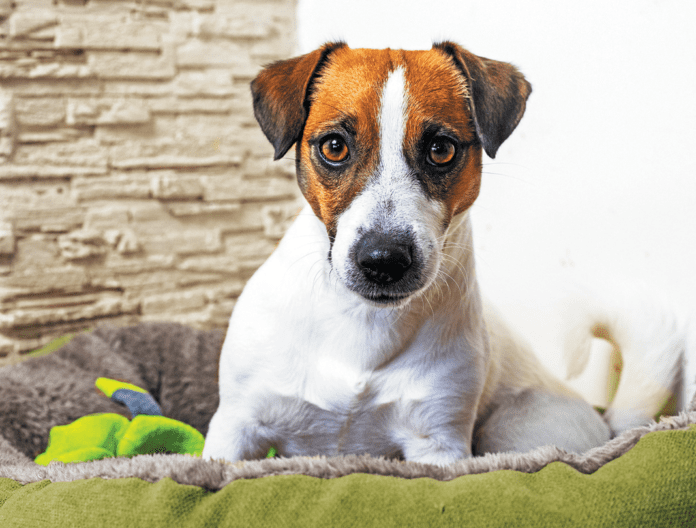You’ve had your rescue dog for a little while, and everything seemed fine at first. He was a bit meek, but you figured he’d relax after a while. Now, though, he is sounding a low growl if you go near his bowl while he’s eating — or baring his teeth if you go to pick up one of his toys. What’s going on?
It’s called resource guarding. It’s not something that tends to happen with dogs you’ve raised from puppyhood but with a rescue dog whose history isn’t fully known. People often mistake the behavior for dominance, but it’s anything but. It comes from insecurity born of past unfortunate experiences. Maybe somebody was mean to the dog, or he never knew where his next meal was coming from.
The term for the psychological problem that leads to such behavior is conflict aggression. The conflict is an inner one. Unsure of how things work in his new home and extremely nervous because he has been through the school of hard canine knocks, a dog believes he has to guard his resources in order to protect his wellbeing. He’s too anxious to understand that you are on his side and are there to take care of him.
There are three ways to help a pet who engages in resource guarding grow calmer and learn to trust you.
1. Plenty of exercise. You might think, what does exercise have to do with anything? But you simply are not going to be able to fix the problem unless the dog gets sufficient physical activity — perhaps at least an hour a day. Dogs, just like people, need exercise for their mental health. They are bred to burn energy. Without a physical outlet such as long walks or catching a ball, the conflict aggression will be extremely difficult to address. (Being active with your dog will also strengthen his bond to you, and that will help in your efforts to defuse his fear.)
2. Remove anxiety triggers. If your dog growls when you go past him while he’s eating, put his food bowl in an out-of-the-way spot that you don’t tend to walk past. And put away any toys that get his guard up (when he’s not in the room). Likewise, if going near his bed makes him start snarling, keep the bed in a far-off corner. You’re not being a wimp, and you’re also not punishing your dog. You’re
just removing provocations from the scene until your pet calms down.
It’s smart thinking. Dogs have bigger teeth than we do, but we have bigger brains. This is a situation in which our brains need to be out in front of a dog’s brawn.
Removing items that get an anxious dog ready to put up his dukes also serves a therapeutic purpose. Every time you do something that makes your dog tense, it only makes him more tense, more sensitized. You want to keep the anxiety and resultant aggressive behavior from intensifying.
3. Consistency, clarity, leadership. With enough exercise in his day and provocations removed, your dog will be in a better position to calm down in the security you provide for him with clear leadership. You can start with something as simple as asking your dog to “Sit” before putting down his bowl with his food in it. You don’t need to say it harshly. Just say it. If the dog complies, let him have his meal. If he doesn’t, put the food away. It’s akin to not passing the potatoes until the child says “Please.”
Later on, try giving the dog back some of his coveted toys. But he will need to sit for them as well — or lie “Down,” or respond to whatever cue you want to give. He will then learn that he can have what he wants if he demonstrates polite behavior — and will relax when you touch resources he values because he will trust the structure you have put in place. People who are softies (you know who you are) might find it hard to require that their dogs engage in specific behaviors to get what they want. But rest assured that your dog will be so much happier
for it.
Note: For most dogs, behavior modification is enough to get them over the hump. Some, however, will need medications such as an SSRI to help stabilize their mood while you teach them how things work in your home.





